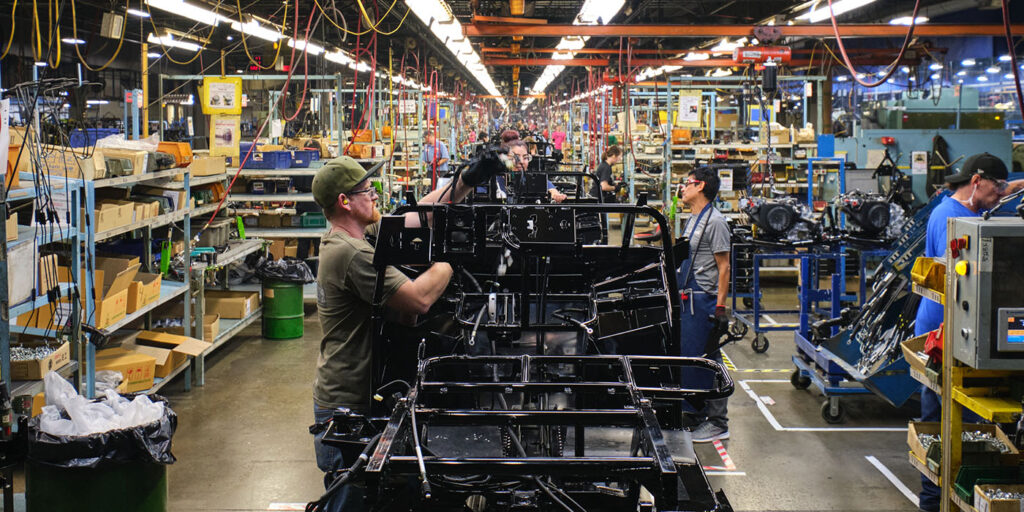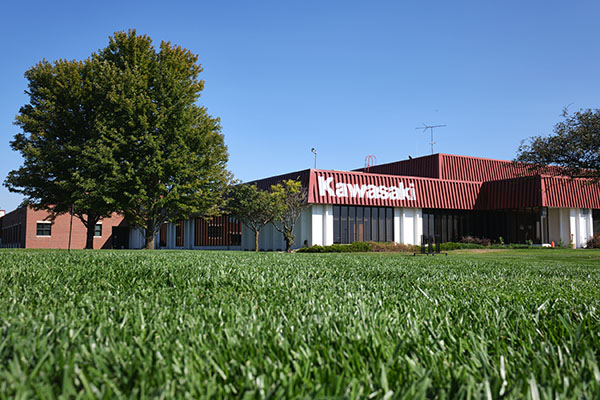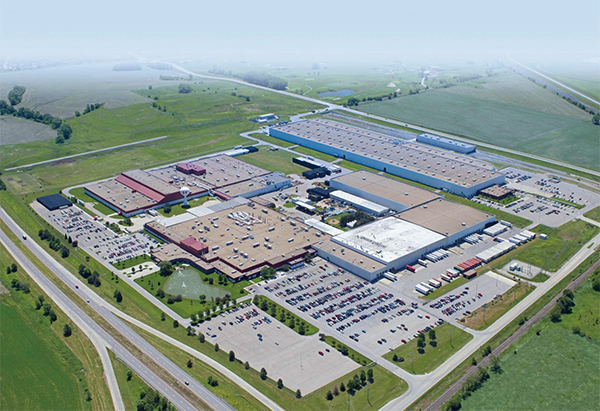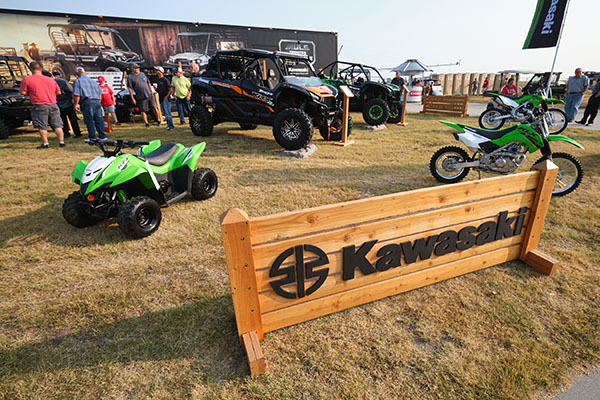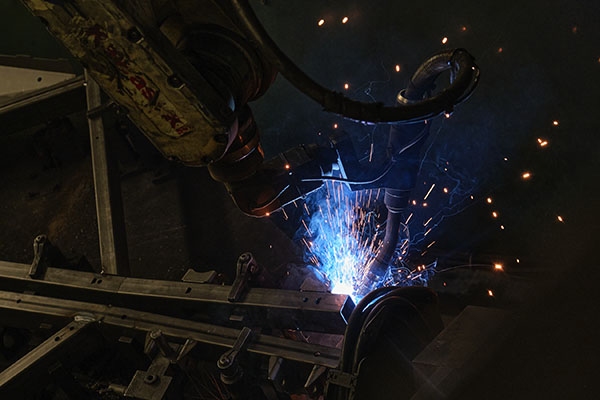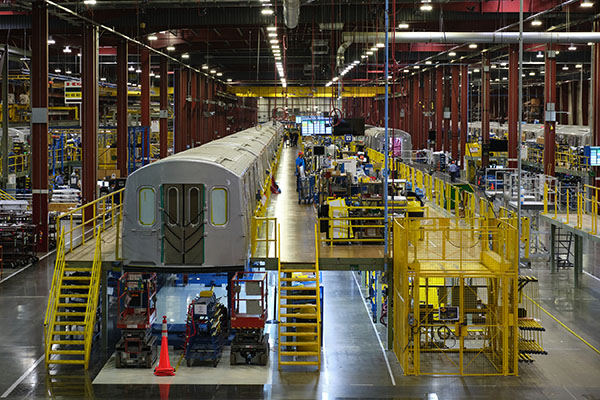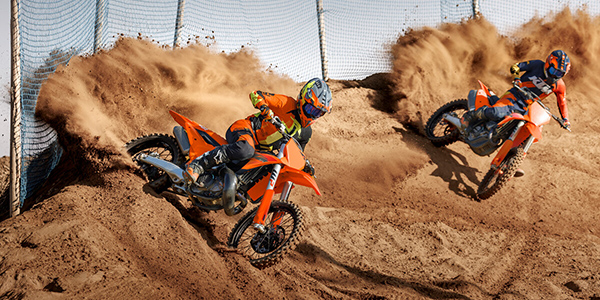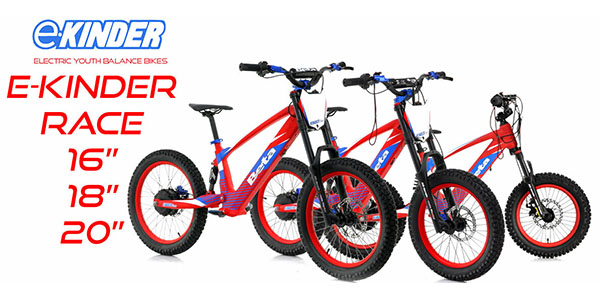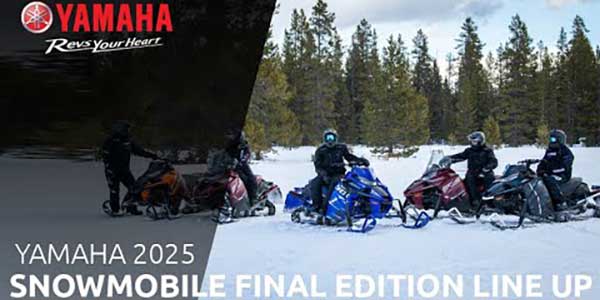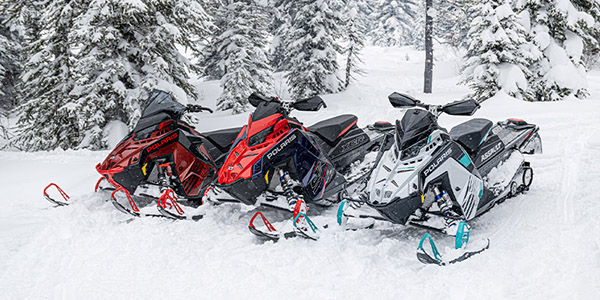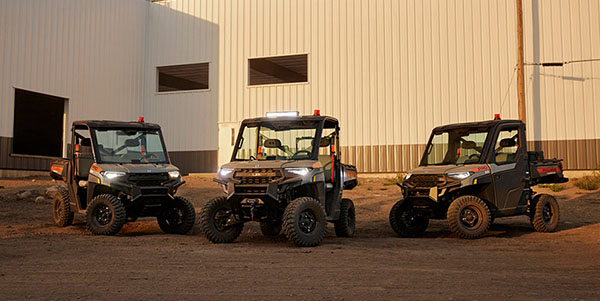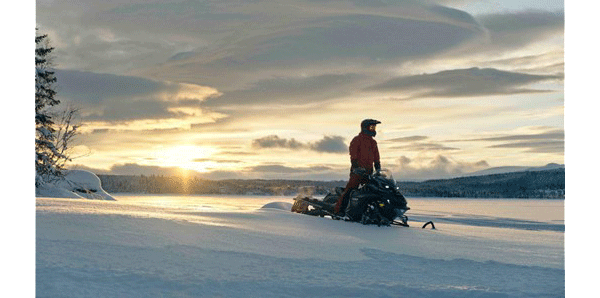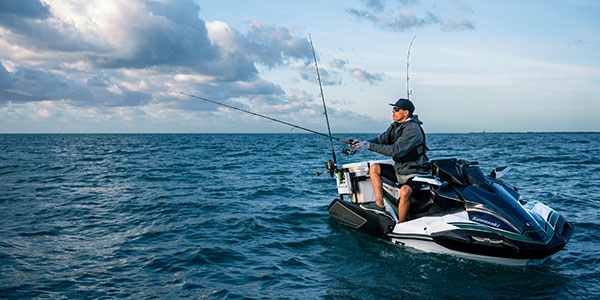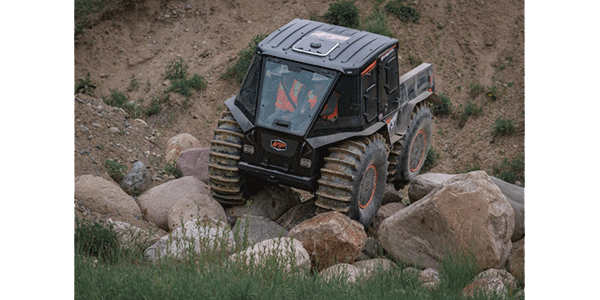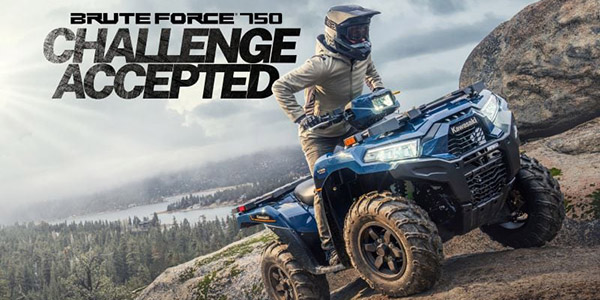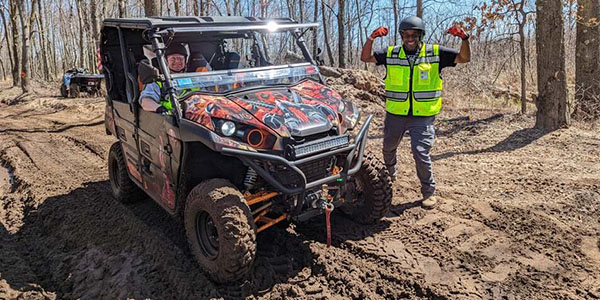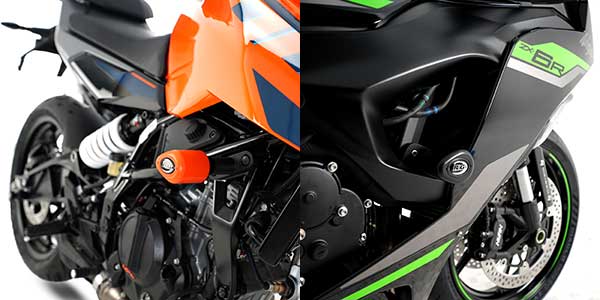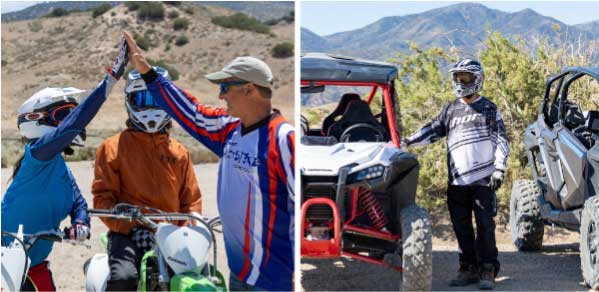You’ve likely heard of Kawasaki Heavy Industries because it’s a multinational corporation and global manufacturer. However, you might not have known that it was founded as a shipyard in Japan in 1878. It goes without saying that Kawasaki Heavy Industries quickly diversified and split into different sectors, eventually encapsulating five separate companies and 102 subsidiaries as well as boasting 36,691 employees. Today, Kawasaki has hands in energy solutions and marine engineering, aerospace systems, precision machinery and robotics, railcar manufacturing and — most recognizable in the west — Kawasaki Motors.
The first Kawasaki motorcycle engines were released in the early ‘50s, and in 1974, a motorcycle assembly plant was launched in Lincoln, Nebraska. It was the first-ever foreign vehicle manufacturing plant in the U.S. At that time, the U.S. was the most dynamic motorcycle market and served as the perfect spot for expansion. Lincoln, a mid-sized city smack dab in the geographic center of the country, connected to Interstate-80 and Interstate-29, was positioned perfectly for a manufacturing plant.
The Kawasaki Motors Manufacturing (KMM) Corporation facility in Lincoln, located on 335 acres of land, has grown since its opening in 1974 from the original 286,000 square feet to over 1.3 million square feet of manufacturing, offices and warehouse space. In 2001, the rail car plant was completed at the Lincoln site, adding 437,000 square feet for light rail car manufacturing.
Nearly 4,000 people work at KMM full-time, part-time and on contract, making it a major employer in the Lincoln area. In 1989, the Maryville plant was opened for production of general-purpose engines. The Maryville facility has grown to nearly 900,000 square feet on 113.7 acres of land employing over 600 people. KMM research and development centers are located at the Lincoln and Maryville facilities to meet customer demands as quickly as possible.
Here in the U.S., Kawasaki might be best known for its green sport bikes, the Ninja being one of its historically popular models. But, in recent years, the manufacturer has greatly expanded its off-road and four-wheeled catalog to appeal to those growing sectors. In fact, the consumer products division of the KMM facility no longer manufactures motorcycles but serves as the birthplace of every Kawasaki ATV, UTV and jet ski.
In fact, the sector is growing so fast that Kawasaki recently announced a $200 million investment plan for the Lincoln facility that will expand the consumer products division, increase automation, add over 550 full-time positions and support a $3.6 billion R211 rail car contract. The Lincoln operation is growing — and fast.
That’s why the MPN team jumped at the opportunity to check out the facility for ourselves when we were invited by Kawasaki to join them for two exclusive media events in mid-September. On day one, we attended Husker Harvest Days, the world’s largest, totally irrigated working agriculture show. Day two brought us a comprehensive tour of the entire KMM facility.
You might be wondering why the MPN team attended an agriculture trade show. Kawasaki attends the show each year to show off its new line of products, many of which are targeted at or are used heavily by the farming community. The new side-by-side, ATV, off-road and dualsport motorcycle models were displayed out on the show floor with Kawasaki team members present to do full walk arounds.
Displayed front and center was the all-new 2023 Teryx KRX 4 1000 eS, Kawasaki’s flagship UTV model. The 999cc four-stroke parallel twin-powered side-by-side boasts a new feature this model year with Kawasaki’s Electronic Control Suspension (KECS). The KECS high-performance suspension system provides the ability to adapt to a wide range of terrain in real time, granting the driver and passengers a much more comfortable ride over harsh terrain.

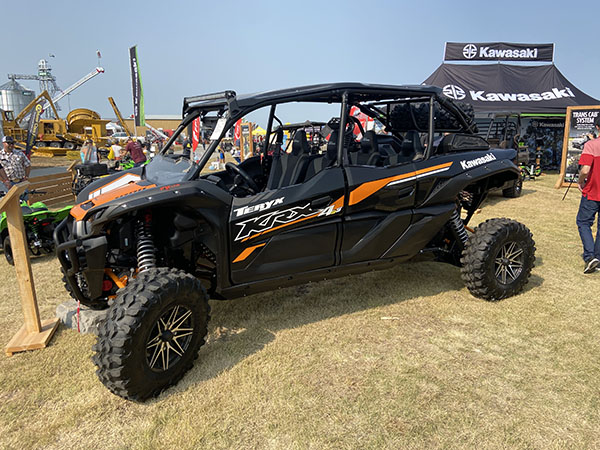
Kawasaki’s Teryx line of UTVs entered the market in 2008. At this time, it was one of few side-by-sides on the market that wasn’t focused purely on utility. They’ve since evolved to lean more on the performance recreation side, although base model (two-seat) Teryx and Teryx S LE models do still feature 600-pound capacity cargo beds and a towing capacity of up to 1,300 pounds. If a utility focused side-by-side (with some thrills to be had in addition) is what you’re after, the Kawasaki MULE has always been the way to go.
The MULE (Multi-Use Light Equipment) side-by-side has been the go-to in the “getting hard work done” category since 1988, and Kawasaki has made sure to keep that mantra alive with newer renditions. We checked out the MULE PRO-FX EPS LE up close at Husker Harvest, and it’s easy to see why it’s such a consistently popular workhorse. With a four-stroke, liquid-cooled 812cc engine, the MULE PRO-FX EPS LE boasts a 999-pound cargo bed capacity and a 2,000-pound towing capacity.
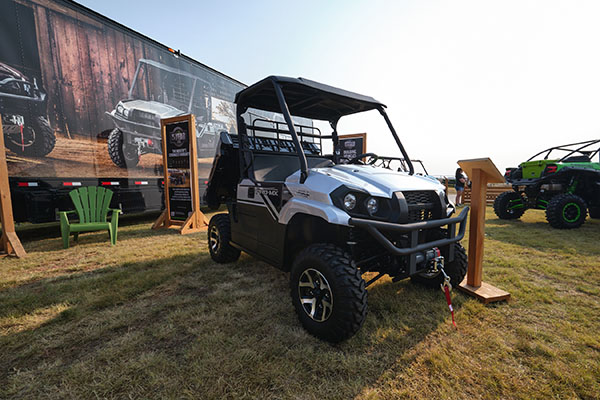
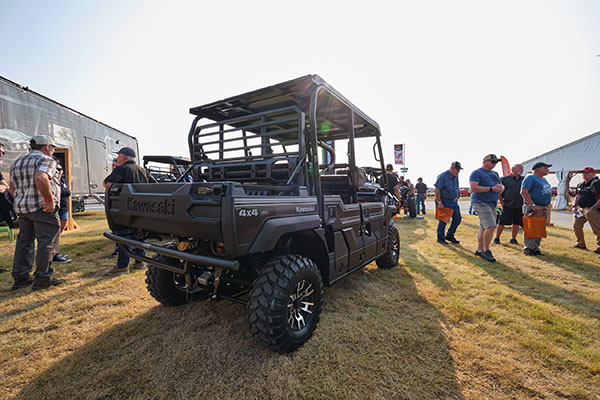
We saw even more Teryx and Mule models (and other offroad vehicles) on day two, when we toured the entirety of the KMM manufacturing facility. The facility was so huge that over the course of our three- to four-hour tour, we walked nearly five miles.
After an introductory presentation detailing the history of Kawasaki and KMM, we were out on the factory floor in the consumer products area, where all of the four-wheel and jet ski vehicles are manufactured. We initially were met by a few assembly lines, where it was apparent that above all else, Kawasaki’s production lines are designed to be flexible.
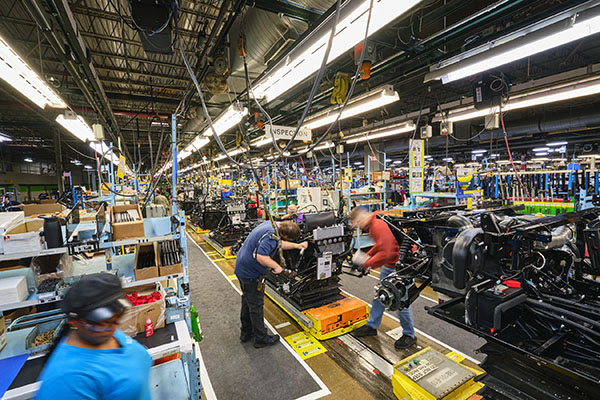
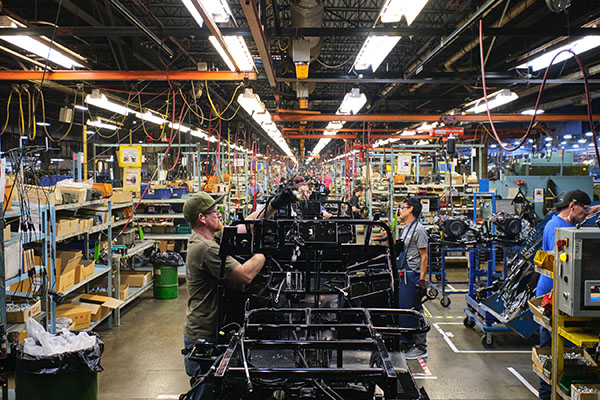
Unlike most manufacturing plants, it’s common for two or three different machines to be making their way down the production line at any given time. A combination of high-tech tooling, management systems and manual labor allow for production to run smoothly and uber-efficiently. In this system, workers are typically studied in multiple areas of production rather than one single task, allowing for more variety and a wider skillset overall. At the end of the line, each vehicle is tested on a “rolling road” where the engine is fired, full engine checks are made, and the machine is run through its full range of capabilities.
That full assembly is only possible after manufacturing, and Kawasaki employs an army of robots do much of the dirty work, including welding, moving heavy parts, pressing, painting and handling dangerous materials before they are used in assembly. They typically operate at the beginning of the production process, cutting, forming and welding the raw materials like steel tubing and sheet metal that will make up pieces of the vehicle frame.
Even more impressive to see were the extensive areas for the rail car and aerospace divisions of KMM, where multi-million-dollar endeavors were meticulously being pieced together by much smaller teams. High-tech cargo doors for Boeing 777-X’s and rail cars primed for big-city transit systems lay about for workers to tool on.
It’s no surprise that Kawasaki is a world leader in rail car production, as the process in which the rail cars are built is very unique. Rather than utilizing a traditional line, each car is assembled on a long welding platform than can be moved freely by workers without mechanical assistance. Paired with an extremely flat and polished floor, the cars can be moved to different areas and worked on in a more flexible manner.
By the end of the tour, we were slightly exhausted but deeply impressed. It isn’t every day you get to see firsthand what goes on behind the scenes of the U.S.’s first-ever foreign vehicle manufacturing plant. Now 48 years on and KMM has all but perfected its unique formula in production, and it will be interesting to see where and how they decide to expand in the coming years.

